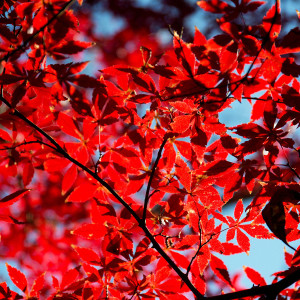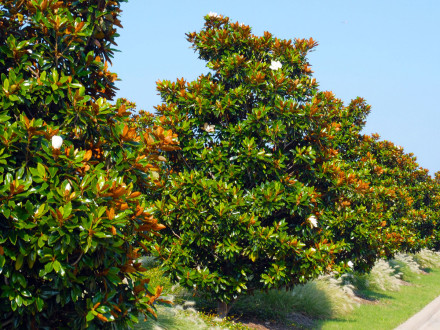IF OCTOBER IS THE PREMIER TREE-PLANTING TIME of the year (to allow maximum new root growth before summer), this would be a fine time to outline steps in choosing the best tree for your needs. I’m frequently asked to recommend “the best types” to my callers and readers, and I thought you might enjoy knowing what thoughts go through my head as I reply. Here are the questions I might ask. You’re welcome to ask them of yourself before you go shopping.
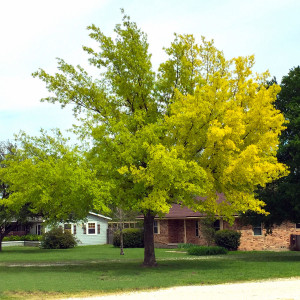
An East Texas species, this water oak is exhibiting iron deficiency in the alkaline soil farther west in the state.
1. Where do you live? Trees can be very site-specific. Most East Texas trees won’t do well in the alkaline soils and low humidity of the western portions of Texas, and West Texas trees won’t fare well in wet ground. Some trees may be winter-hardy only along the Gulf Coast, while others need the colder winters of North Texas to thrive. Your best bet is to talk your plans (and your plants) over with your local independent retail garden center for help that is specific to your area.
2. What type of soil do you have, and how deep is that soil? East Texas pines, water oaks, dogwoods and American holly selections must have acidic soil. They won’t grow in the alkaline soils that run along and west of I-35, and to change the soil enough to allow them to do well would cost tens of thousands of dollars per tree. If you live with alkaline soils, stick with the types that are suited to those conditions.
3. How large do you want the tree to grow? Consider the size of your lot and whether your house is one or two stories tall. Look overhead to see if power lines are in place. If there are, plant so that your trees will never grow into them. Large tree species need to be 20 or 30 feet away from two-story houses and 50 feet back from power lines. Smaller species can be proportionately closer.
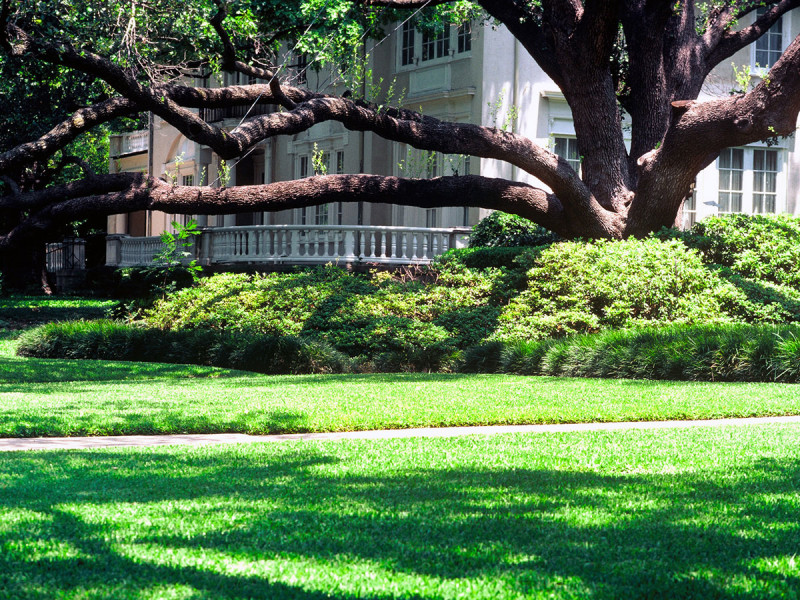
Know the mature size of the tree you are planting. A live oak like this can reach a spread of 65 feet.
4. How many other trees do you have in that part of your landscape already? One large shade tree may be perfect. Three may be too many. Sadly, there are gardeners out there who don’t know when to stop planting. Crowded trees ruin one another, so don’t push your limits. One or two trees of appropriate size will be all that are needed in standard urban front yards, with one or two more in the back.
5. Are there foundations, walks, patios or drives nearby? You do have to be concerned about large surface roots developing over the years. Stay at least 10 to 20 feet back and you should have no problems. If surface roots do become troublesome, have a certified arborist cut them and install root barriers to prevent any damage.
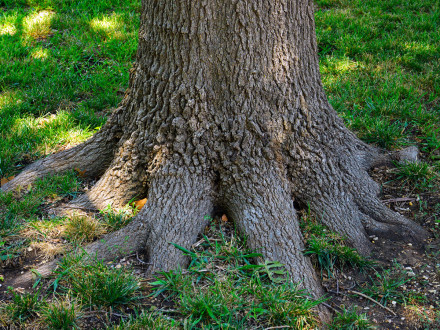
Be aware of certain varieties’ propensity for large roots. These healthy red oak roots could damage hardscaping if not allowed sufficient room to grow.
6. Are there any special considerations to be aware of at the outset? This is where “fast growth” usually crops up. And that’s when I tell people that fast growth is a terrible criterion on which to choose shade trees. All fast-growing trees have at least one fatal flaw that will limit their life expectancy to just 10 or 25 years. By the same token, don’t get too wrapped up in fall color, spring flowers or other seasonal attributes. If a top-quality tree has them, so much the better, but many of those features are present only a couple of weeks out of the year. You want a tree that looks great all 52 weeks.
Best large trees for Texas
This is a list that is somewhat arbitrary, particularly as you head into deep South Texas or the north reaches of the Panhandle. However, for most of the state, these would be my recommendations: live oak, Shumard red oak, chinquapin oak, bur oak, cedar elm, pecan and (the one non-native among them) Chinese pistachio. If speed of growth is of little concern, southern magnolia will do well in much of the state, but it is truly slow growing. In East Texas’s sandy soils, water oak, southern red oak, willow oak and bald cypress will all be well suited.
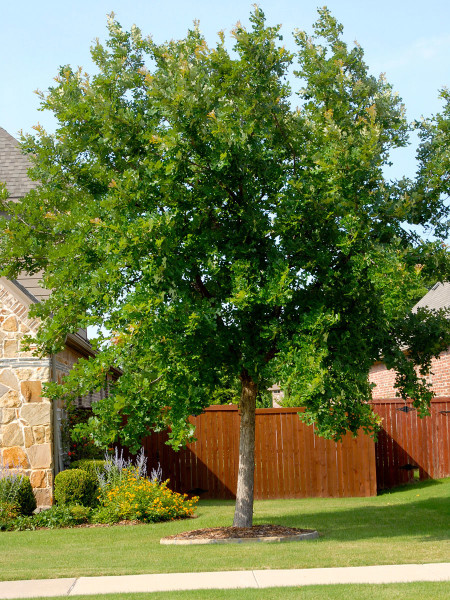
This young bur oak will grow into a magnificent giant, reaching a height and width of approximately 60 feet.
Best small and medium-sized trees
When you don’t have enough room for one of those large shade trees, you step down to something more compact. Candidates would include ‘Little Gem’ southern magnolia and the even-smaller ‘Teddy Bear’ magnolia, golden raintree, ginkgo, redbud, Mexican plum, tree-form yaupon hollies and possumhaw hollies, larger tree-form crape myrtles, and in East Texas, dogwoods.


